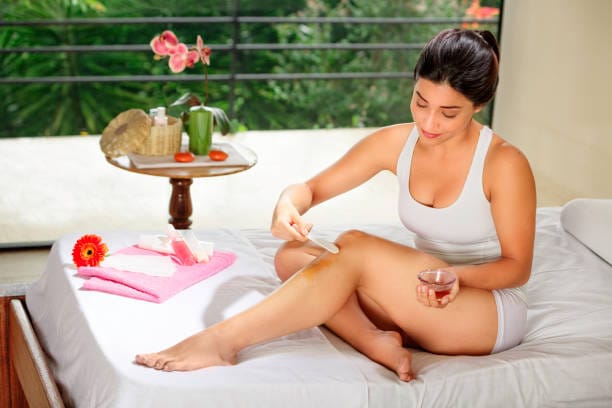Do you find yourself hesitating to wear your favorite shorts or skirts because of dark spots on your knees? Ever wonder why some parts of your skin darken more than others, especially around the knees? If these questions resonate with you, you’re certainly not alone. Hyperpigmentation on the knees is a common skin issue that many grapple with, but the good news is, it’s treatable.
In this article, we will dive into what hyperpigmentation is and how to effectively address hyperpigmentation on your knees.
Table of Contents
What is Hyperpigmentation?
Hyperpigmentation occurs when parts of the skin become darker than the surrounding areas. This darkening happens due to an excess production of melanin, the pigment responsible for skin color. Factors like sun exposure, injury, or friction can increase melanin production, leading to dark patches or spots, particularly on the knees where the skin is thicker and often subjected to pressure.
why on the Knees?
The skin on your knees is naturally thicker and more prone to dryness and irritation due to its frequent exposure to friction and pressure. This makes the knees a common site for hyperpigmentation, but understanding this is the first step in treating and preventing it.
Step-by-Step Guide to Treating Knee Hyperpigmentation
Moisturize Regularly
Keeping your skin moisturized is crucial. Dry, flaky skin is more prone to discoloration and irritation. Use hydrating lotions or creams enriched with ingredients like aloe vera, hyaluronic acid, or glycerin that nurture the skin and maintain its barrier function.

Gentle Exfoliation
Exfoliation helps remove dead skin cells and rejuvenate the skin. For the sensitive knee area, use a gentle exfoliator with ingredients like jojoba beads or oatmeal. Limit exfoliation to once or twice a week to prevent irritation.
Sun Protection
Protecting your skin from the sun is essential. UV rays can worsen hyperpigmentation. Apply a broad-spectrum sunscreen with SPF 30 or higher to your knees daily when exposed. Reapply every two hours if you’re spending the day outdoors.
Topical Treatments
Consider using topical treatments that target pigmentation. Products containing kojic acid, vitamin C, or azelaic acid have properties that can lighten dark spots. Be patient and consistent with these treatments as results can take several weeks to appear
Natural Remedies
For those who prefer natural solutions, ingredients like turmeric and cucumber can be effective. A mask made from crushed cucumber and a pinch of turmeric can be applied to the knees for 15 minutes before rinsing off. These ingredients have natural skin-lightening properties.
Consult a Dermatologist
If home and over-the-counter treatments aren’t yielding results, it might be time to consult a dermatologist. They can offer treatments like chemical peels or laser therapy, which can provide more significant improvements in skin tone.
Preventing Hyperpigmentation on the Knees
- Prevention is just as crucial as treatment.
- Avoid prolonged pressure on your knees and wear protective clothing when engaging in activities that involve kneeling.
- Keep your skin hydrated and protected from the sun.
- consider adding anti-inflammatory foods to your diet to help maintain healthy skin.
Conclusion
Tackling hyperpigmentation on your knees can boost your confidence and comfort in your own skin. With the right care, you can reduce the appearance of dark spots and prevent new ones from forming.
Photo Credit: GETTY
























